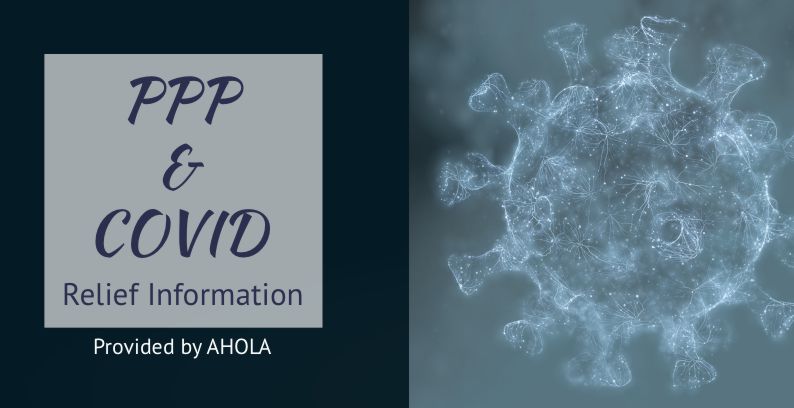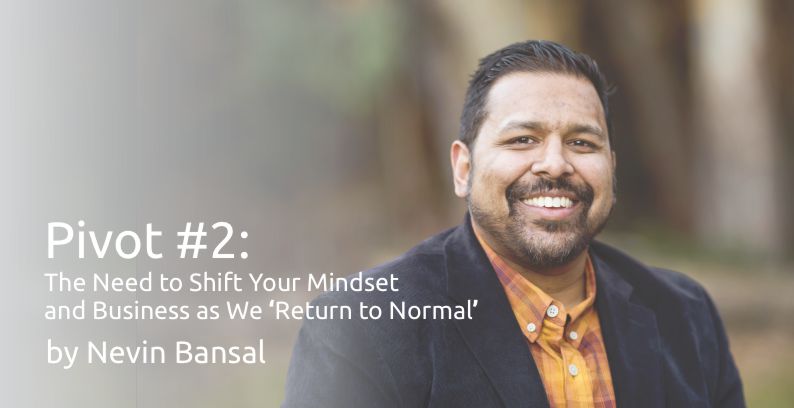We recently checked in with the local small business community to learn how you're giving…
PPP & COVID Relief Information Provided by Ahola
Small Biz Cares Investor Member, Ahola, has recently published important information for small businesses regarding the government’s Paycheck Protection Program & the most recent COVID Relief Bill.
Ahola provides payroll and a broad set of HR solutions that are constantly being built on and adjusted to the ever-changing landscape of helping clients focus on their business while Ahola takes care of their workforce needs.
We are here to empower organizations to succeed by allowing them to focus on what they do best, because we take care of their payroll and human resources needs with the utmost accuracy, expertise, and caring.
Our heritage and drive for enduring success is shared by our clients who will never settle for just being successful – they also share in our vision of creating a legacy that provides for the many employees who are part of what they have created.
Click the titles below to view the original posts from Ahola.
Enacted at the end of 2020, the Consolidated Appropriations Act, 2021, allocates $325 billion to small businesses, nonprofits and venues hit hard by the COVID-19 pandemic. Of that amount, approximately $284 billion goes toward the Paycheck Protection Program. The previous round of PPP funding ended earlier in 2020.
The rules are complex, but here’s an overview of the key PPP provisions:
First-draw and second-draw loans
The new PPP is open to both first-time and second-time borrowers.
Eligible first-draw borrowers include businesses with 500 or fewer employees, sole proprietors, independent contractors and self-employed individuals.
Eligible second-draw borrowers must:
- Have no more than 300 employees.
- Have used or will use all of their initial PPP loan.
- Show at least a 25% decline in gross receipts during Q1, Q2, Q3 or Q4 of 2020, comparable to the same quarter in 2019.
Loan cap
The maximum loan amount for each PPP borrower is $2 million, decreasing from $10 million in the previous round.
Loan usage time frame
PPP borrowers must use their loan within eight weeks or 24 weeks, in order to have their loan forgiven. They must choose one or the other.
Eligible PPP expenses
As before, borrowers must allocate at least 60% of their PPP loan toward payroll costs. The new PPP adds the following eligible non-payroll expenses:
- Operating costs for human resources and accounting needs — e.g., business software used to carry out those functions.
- Worker protection costs — e.g., personal protective equipment.
- Property damage costs — e.g., certain damages not covered by insurance.
- Supplier costs — e.g., specific goods that are essential to the business’s operations.
Borrowers can also include additional group insurance in their payroll cost calculation — such as for life, dental, vision and disability insurance coverage.
Bankruptcy allowance
Unlike before, borrowers who are in Chapter 11 bankruptcy may now qualify for PPP loans.
Underserved, veteran and minority-owned businesses
There are special provisions for underserved, veteran and minority-owned businesses — including those with 10 or fewer employees and those located in low-to-moderate-income neighborhoods. Additionally, the Small Business Administration says that it will take steps to make it easier for these businesses to obtain PPP access.
More PPP provisions
- Simplified loan forgiveness application for borrowers with loans of up to $150,000. These borrowers only need to complete a one-page certification.
- Eligible expenses paid with forgiven PPP funds are tax-deductible.
- Borrowers can take a PPP loan and the Employee Retention Tax Credit, so long as certain conditions are met.
- The new PPP extends the ERTC to June 30, 2021, and raises the credit rate from 50% to 70%.
Notably, the act reopens the Economic Injury Disaster Loan advance/grant program plus provides grants to shuttered businesses in the arts and culture sector, such as live venues, theaters and museums.
The PPP opened to new borrowers on Jan. 11, 2021, and to second-draw borrowers on Jan. 13, 2021. However, not all lending institutions are able to roll it out at the same time; contact your institution for details, and let us know if you have any questions.
A new $900 billion coronavirus relief bill has become law and answers the question of whether federal Emergency Paid Sick Leave (EPSL) and Emergency Family and Medical Leave (EFMLA) will be extended.
The answer is yes, but it’s an option, not a requirement. Here’s what employers need to know:
- Offering EPSL and EFMLA after December 31 will become optional for employers.
- An employee will no longer be entitled by law to take EPSL or EFMLA, even if they have a qualifying reason.
- Employers who choose to offer these paid leaves can still receive a tax credit if they follow the current EPSL and EFMLA rules, including job protection.
- The extension of the tax credit will be available for leaves taken through March 31, 2021.
- With one possible exception (see below), employees will not get new hours to use—the unused portion of their original allotment that remains on January 1 is how much they will be able to use through March 31. For instance, if an employee who was entitled to 80 hours of EPSL between April 1 and December 31 used 40 of those hours in 2020, they’d have 40 hours left to use between January 1 and March 31, 2021.
Employers who choose to offer EFMLA after December 31 will need to provide a new bank of 12 weeks if their regular FMLA year is the calendar year or another fixed 12-month period that resets before March 31.
The new law also extends or revives several other benefits from previous coronavirus-related legislation, some of which are listed below. These aspects of the law are outside the scope of our services, so we are unable to answer follow-up questions. Some of the notable provisions include:
- Individual payments of $600 for people with incomes at or below $75,000 and $600 per dependent children, with payments phased out for higher incomes
- A $300 weekly supplemental unemployment benefit, through March 14, 2021
- Extension of Pandemic Unemployment Assistance (for gig workers and the self-employed) and Pandemic Emergency Unemployment Compensation (for those who run out of state unemployment insurance benefits), through March 14, 2021
- Reopening and refunding of the Paycheck Protection Program (see your financial or tax advisor for additional information)
Content will be updated as more information becomes available.
Looking for more HR help? The Ahola team of Certified HR Professionals can help. Contact Ahola to learn more.
Content provided by Ahola’s HR Support Center.




